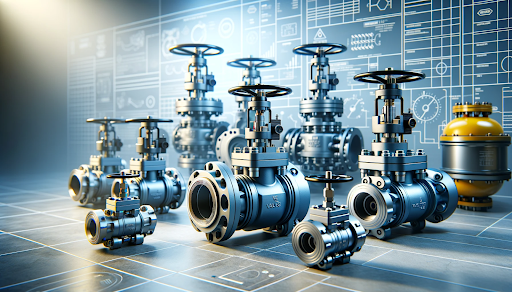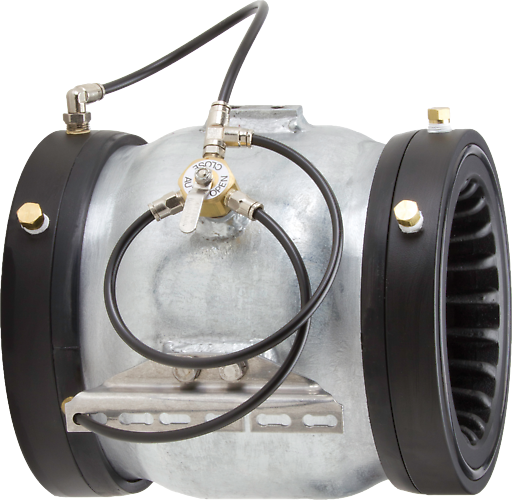Vital Variables to Take Into Consideration When Picking Control Valves

Maximize Power Savings and Convenience With Advanced Building Automation Controls
In the world of modern-day architecture and facility monitoring, the integration of innovative structure automation manages stands as an essential innovation. The merging of innovation and sustainability has birthed a brand-new era where power effectiveness, comfort optimization, and operational streamlining are no much longer far-off goals but possible truths. By using the power of automation, buildings can adjust, respond, and evolve in manner ins which were when inconceivable. The potential for considerable energy financial savings and improved convenience is not simply a possibility yet a pledge waiting to be met. This standard change in structure monitoring holds the key to opening a world where environmental conscientiousness and resident health harmoniously exist side-by-side within the walls of our frameworks.
Energy Performance Conveniences
Energy effectiveness advantages can dramatically minimize power intake and functional expenses in structures. By implementing energy-efficient methods and modern technologies, structure proprietors and operators can achieve considerable cost savings while likewise adding to ecological sustainability. Among the key advantages of boosting power performance in structures is the decrease of energy costs. Energy-efficient systems, such as advanced building automation controls, can optimize using sources like air conditioning, heating, and lighting, bring about lower power expenditures in time.
In addition, improved energy effectiveness can extend the life-span of building devices and systems. By operating more successfully, HVAC systems, light, and other structure elements experience much less deterioration, resulting in minimized maintenance and substitute prices. Furthermore, energy-efficient structures usually command greater building values and rental prices, supplying long-term monetary advantages to owners.
Moreover, power effectiveness can boost resident convenience and performance. Correctly managed interior environments with optimum illumination and thermal conditions develop an even more pleasurable and helpful work space, leading to enhanced staff member complete satisfaction and efficiency. Overall, the energy performance advantages connected with innovative structure automation controls are complex, encompassing cost financial savings, environmental stewardship, and owner health.
Boosted Comfort Control
Enhancing comfort control in building atmospheres needs an innovative integration of innovative automation systems for ideal occupant health. By using sophisticated structure automation controls, centers can tailor the interior environment to meet the particular needs and preferences of owners. These systems enable precise guideline of temperature, lights, and air flow, creating a comfy and effective environment. Passenger satisfaction and performance are very closely linked to thermal convenience, making it important to have systems in position that can adapt to transforming problems in real-time.
Boosted comfort control goes past standard temperature level adjustments. It includes attributes such as customized settings, occupancy sensing units, and natural light usage to produce a dynamic and responsive setting. By including these advanced controls, buildings can not just boost comfort but likewise boost power performance by maximizing system operations based on actual tenancy and use patterns. Ultimately, focusing on owner convenience via sophisticated automation systems brings about a more delightful and much healthier interior environment.
Operational Efficiency Improvements

In addition, the application of real-time monitoring and analytics devices allows structure operators to recognize energy inefficiencies and functional abnormalities immediately. By continuously keeping track of power usage patterns and system performance metrics, adjustments can be made in real-time to enhance energy usage and ensure peak functional effectiveness. control valves. In addition, integrating need feedback methods into building automation controls can better enhance operational effectiveness by dynamically adjusting energy use based on grid conditions and pricing signals
Indoor Climate Optimization
Reliable indoor climate optimization is a basic aspect of building automation controls, making certain residents' convenience and the original source health while taking full advantage of power savings. By using innovative sensors and controls, developing automation systems can continually keep an eye on and adjust temperature, humidity degrees, air high quality, and air flow to produce an optimal interior atmosphere. Preserving comfy and constant conditions not only boosts owner satisfaction yet likewise boosts productivity and general wellness.
Indoor climate optimization also plays a critical duty in power performance. By fine-tuning air conditioning, home heating, and air flow systems based upon real-time data and occupancy patterns, developing automation controls can substantially decrease energy intake - control valves. For circumstances, carrying out approaches such as demand-controlled air flow and thermal zoning can assist decrease energy waste while ensuring that each area of the building obtains the necessary conditioning.

Sustainable Setting Creation
Structure automation manages not just enhance interior climate problems for energy performance and resident convenience but additionally lay the foundation for developing a sustainable setting through critical management of sources and systems. By incorporating innovative building automation modern technologies, such as sensors, actuators, and smart software, centers can readjust and keep track of power use in this post real-time to reduce waste and minimize their carbon impact. These systems enable anticipating maintenance, determining possible issues before they intensify and maximizing equipment performance to improve long life and efficiency.
Furthermore, lasting setting production extends beyond energy administration to incorporate water preservation, waste decrease, and interior air quality improvement. Building automation controls can control water usage, identify leakages, and ensure proper waste disposal methods, adding to total sustainability efforts. Additionally, by keeping an eye on and regulating ventilation and filtering systems, these modern technologies boost owner health and efficiency while reducing energy usage related to HVAC procedures.
Verdict
To conclude, progressed structure automation manages offer significant advantages in regards to energy savings, convenience control, functional effectiveness, indoor environment optimization, and producing a sustainable environment. By implementing these controls, structures can accomplish optimum performance while reducing power usage and improving owner convenience. It is apparent that the use of innovative automation innovation is important in enhancing structure performance and creating an extra sustainable future.
Energy performance advantages can considerably reduce power consumption and functional costs in structures. Overall, the power efficiency advantages associated with innovative building automation controls are diverse, encompassing expense savings, ecological stewardship, and occupant wellness.
In addition, incorporating demand reaction methods right into structure automation controls can better boost functional performance by dynamically readjusting power use based on grid problems and rates signals.
Structure automation regulates not important source just enhance interior climate conditions for power efficiency and occupant convenience yet additionally lay the structure for producing a sustainable environment through tactical management of resources and systems.In verdict, progressed structure automation regulates deal considerable benefits in terms of energy savings, convenience control, functional effectiveness, indoor environment optimization, and producing a sustainable environment.